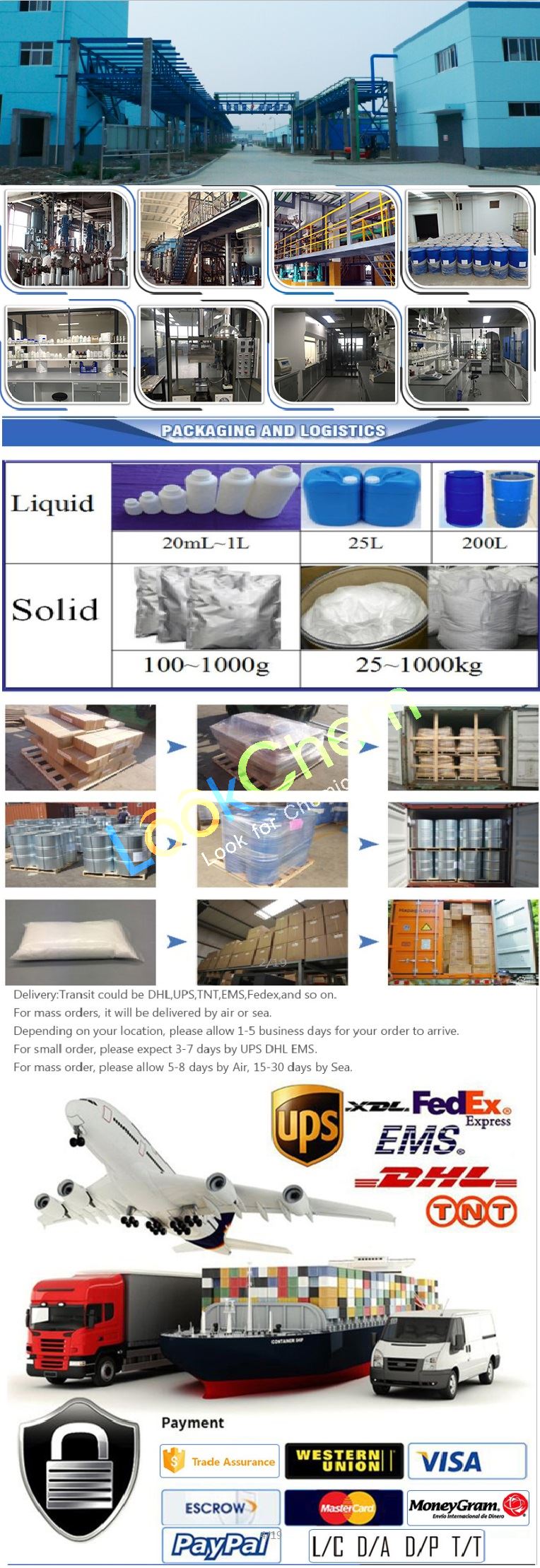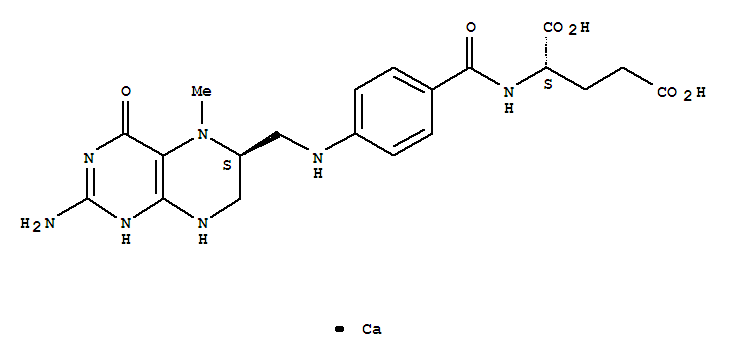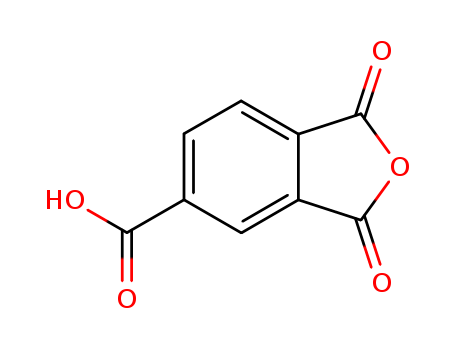- Product Details
Keywords
- 1-Oxa-4-azacyclohexane
- Tetrahydro-2H-1,4-oxazine
- morpholine sigmaultra
Quick Details
- ProName: morpholine
- CasNo: 110-91-8
- Molecular Formula: C4H9NO
- Appearance: Colorless Liquid
- Application: In medicine, dyes intermediates
- DeliveryTime: 2-3day
- PackAge: As required
- Port: shanghai or other
- ProductionCapacity: 5 Metric Ton/Month
- Purity: 99%
- Storage: Store in a cool and dry area, keep sea...
- Transportation: by sea or by air
- LimitNum: 10 Metric Ton
Superiority
Changzhou Xuanming Chemical Co., Ltd. is dedicated to the technology development, manufacturing, import and export chemicals, which are specialized in pharmaceutical intermediates, pesticide intermediate, industry of fine chemicals and custom synthesis. Now, we enjoy good reputation among customers and take favorable market share in domestic and at abroad.
Changzhou Xuanming Chemical CO., LTD is located in Northern Jiangshu Industry Park, we have modern manufacture bases and some laboratories, which can supply the key intermediate for your projects, and short your synthesis scheme and supply you a reference compound for bioassay or a high purity analytical standard. We have been abided by “treat technology as first, quality as basis, customers as God, and be honest and sincere”. It is our final aim to provide environmental and high technological products and meet customers’ requirements according to keep effors on developing new chemical fields.
Changzhou Xuanming Chemical CO., LTD promises to help you with heart and soul.

Details
| orpholine Basic information |
| Product Name: | Morpholine |
| Synonyms: | MORPHOLINE, REAGENT (ACS)MORPHOLINE, REAGENT (ACS)MORPHOLINE, REAGENT (ACS);Doxapram Impurity 2 (Morpholine);Drewamine;morpholine,aqueousmixture,[corrosivelabel];morpholine,aqueousmixture,[flammableliquidlabel];NA 2054;p-Isoxazine, tetrahydro-;Tetrahydro-1,4-isoxazine |
| CAS: | 110-91-8 |
| MF: | C4H9NO |
| MW: | 87.12 |
| EINECS: | 203-815-1 |
| Product Categories: | -;Organic Chemicals;BasesChemical Synthesis;Organic Bases;Supported Reagents;Supported Synthesis;Synthetic Reagents;Thiophenes;ACS Grade;Building Blocks;C4 to C10;Chemical Synthesis;Essential Chemicals;Heterocyclic Building Blocks;Inorganic Salts;Morpholines/Thiomorpholines;Research Essentials;Solutions and Reagents;Organic solvents |
| Mol File: | 110-91-8.mol |
|
|
|
| Morpholine Chemical Properties |
| Melting point | -5 °C |
| Boiling point | 129 °C(lit.) |
| density | 1.000 g/mL at 20 °C |
| vapor density | 3 (vs air) |
| vapor pressure | 31 mm Hg ( 38 °C) |
| refractive index |
n |
| Fp | 96 °F |
| storage temp. | Store at R.T. |
| solubility | water: miscible |
| form | Liquid |
| pka | 8.33(at 25℃) |
| color | APHA: ≤15 |
| Specific Gravity | 0.996 |
| PH | 11.2 (H2O)(undiluted) |
| explosive limit | 1.4-15.2%(V) |
| Water Solubility | MISCIBLE |
| FreezingPoint | -4.9℃ |
| Sensitive | Hygroscopic |
| Merck | 14,6277 |
| BRN | 102549 |
| Exposure limits | TLV-TWA 20 ppm (~70 mg/m3) (ACGIH, MSHA, and OSHA); STEL skin 30 ppm (ACGIH); IDLH 8000 ppm. |
| Stability: | Stable. Flammable. Incompatible with strong oxidizing agents, strong acids, acid chlorides, acid anhydrides. Hygroscopic. |
| InChIKey | YNAVUWVOSKDBBP-UHFFFAOYSA-N |
| CAS DataBase Reference | 110-91-8(CAS DataBase Reference) |
| NIST Chemistry Reference | Morpholine(110-91-8) |
| EPA Substance Registry System | Morpholine(110-91-8) |
| Safety Information |
| Hazard Codes | C |
| Risk Statements | 10-20/21/22-34 |
| Safety Statements | 23-36-45 |
| RIDADR | UN 2054 8/PG 1 |
| WGK Germany | 3 |
| RTECS | QD6475000 |
| Autoignition Temperature | 590 °F |
| TSCA | Yes |
| HS Code | 2934 99 90 |
| HazardClass | 8 |
| PackingGroup | I |
| Hazardous Substances Data | 110-91-8(Hazardous Substances Data) |
| Toxicity | LD50 orally in female rats: 1.05 g/kg (Smyth) |
| Morpholine Usage And Synthesis |
| Product Features |
Morpholine, also known as 1, 4-oxazepine and diethylenimine oxide, is a kind of colorless alkaline oily liquid. It smells of ammonia and has hygroscopicity. Morpholine could evaporate with water vapor and miscible with water. It is Soluble in acetone, benzene, ether, pentane, methanol, ethanol, carbon tetrachloride, propylene glycol and other organic solvents. Morpholine Vapor could form an explosive mixture with air and the explosion limit is 1.8% to 15.2% (volume fraction). Morpholine is a secondary amine, and at the same time it has the property of inorganic acid and organic acid, so that it can generate salt and amide. Morpholine contains secondary amine groups and it has all the typical reaction characteristics of the secondary amine groups. It can react with inorganic acid to form a salt, and also can react with organic acid to form salt or amide. Morpholine can carry out alkylation reactions and it also carry out ketone reaction or Willgerodt reaction with ethylene oxide. Because of the unique chemical properties of morpholine, it has become one of the important petrochemical products with important commercial application. It can be applied to produce rubber vulcanization accelerators such as NOBS, DTOS and MDS. And it is also applied to produce anti-corrosives, anti-corrosion agents, detergents, detergents, analgesics, local anesthetics, sedatives, respiratory and vascular stimulants, surfactants, optical bleach, fruit preservatives, and textile dyeing auxiliaries. Morpholine also has a wide range of applications in the field of rubber, pharmaceuticals, pesticides, dyes, coatings and other industries. In medication it could be applied in the production of morpholine guanidine, virus Ling, ibuprofen, cough must, naproxen, dichloroaniline, sodium phenylacetate and other important drugs. The two main production method of morpholine are DEA method (diethanolamine method) and DEA method (diethylene glycol method) It is noteworthy that new polymer monomer acrylic morpholine has obtained a rapid development in recent years. Acrylic acid morpholine could be produced from the reaction between acrylic acid and morpholine. And acrylic acid morpholine is a kind of water-soluble monomer, and it is still water-soluble after the polymerization. So it could be applied for the modification of aqueous polymers. Besides, acrylic morpholine is widely used as a reactive diluent for UV curable resins. With the deepening of applied research, many new specific uses have been developed and it becomes polymer monomer with rapid development. Figure 1 for the morpholine structure |
| Chemical properties | It is colorless water-absorbing oily liquid and it smells ammonia. It is soluble in water and methanol, ethanol, benzene, acetone, ether, ethylene glycol and other commonly used solvents. |
| Uses |
(1) For medicine, it used as the raw materials for rubber accelerator and fluorescent whitening agent. (2) Morpholine is the intermediates of fungicide dimethomorph and flumorpholine and organophosphate insecticide phosalphos. (3) Morpholine is Mainly used for the production of rubber vulcanization accelerator, but also for surfactant, textile auxiliaries, pharmaceuticals, pesticide synthesis. (4) Morpholine also used as a catalyst for polymerization of butadiene, corrosion inhibitors, optical bleach, the goods are dyes, resins, wax, early glue, casein and other solvents. At present, the total production of morpholine in the world is 3-4 million t/a. (5) Morpholine salts are also widely used. Morpholine salts like morpholine hydrochloride (10024-89-2) are the organic synthesis of intermediates. Morpholine fatty acid salt can be used as the coating agent of fruits or vegetables epidermal coating agent, and it could inhibit the base respiration and prevent the epidermis from evaporation of water and epidermal atrophy. (6) Morpholine is the main raw materials of accelerator NOBS. for analysis reagents and resins, wax, shellac and other solvents, used in the production of sodium sulfate. Water glass and ultramarine. Also used in the manufacture of glass. Paper. Detergent. Soap. Dye. Synthetic fiber. Tanning. Medicine and ceramics industries. Analysis reagents, such as nitrogen determination, dehydrating agent. (7) Morpholine is used for the analysis of reagents and resins, wax, casein, shellac and a variety of solvents solvent. (8) Morpholine could produce salt after reacting with inorganic acid, and it also could produce salt or amide after reacting with organic acid. It also can be alkylated, and it also could come up a ketone reaction or Willgerodt reaction with ethylene oxide. |
| metal corrosion inhibitors | As a kind of metal corrosion inhibitor, Morpholine is mainly applied for the anti-corrosion of iron, copper, zinc, lead and other metals. It remains at its starting stage in China, but outside the country, a considerable proportion of Morpholine are used as a kind of anti-rust agent for metal gas to prevent the metal corrosion caused by atmosphere and it has been widely used in the field of mechanical instruments, automobiles, medical equipment and others. The metal atmospheric rust inhibitor used earlier such as dicyclohexylamine nitrite and cyclohexylamine do harm to the human body and they are more environmentally toxic. Instead, morpholine as a metal gas-liquid corrosion inhibitor, it has the advantages of low toxicity, so the foreground is prosperous. |
| rubber vulcanization accelerator |
Before 1990's, in Europe, the United States, Japan and other developed areas, the consumption of rubber vulcanization accelerator accounted for more than 50% of the total demand for morpholine. At present, more than 30% consumption of rubber vulcanization accelerator is used for NOBS. In recent years, the toxicity issue of the harmful nitrosamines in the accelerator which produced during rubber processing is driving more attention internationally. A number of restrictive laws and regulations are introduced all around the world. For example, in Germany as early as 1982, the law about the regulations issued nitrosamine content control was established. The United States, Japan, France, the United Kingdom actively developed new vulcanization accelerator which don’t produce nitrosamine, and they have stopped using nitrosamine which will produce vulcanization accelerator. Therefore, the consumption of morpholine in foreign countries has decreased with banning of the accelerator NOBS year by year. In China however, we have no corresponding regulations prohibited about banning accelerator NOBS. But China has joined the WTO, due to a large number of foreign enter and high requirement about additives localization, it requires more environmental protection in China's rubber vulcanization accelerator. Using non-toxic promoter and replacing NOBS becomes the general trend. China's demand for NOBS is significantly reduced in recent years. China will no longer use basic decomposition of nitrosamine secondary amine accelerator. As the main substitute of NOBS, NS (N-tert-butyl-2-benzothiazole sulfonamide), which does not produce nitrosamines, has a large production capacity. In 2005, the output was 14,000 tons and it is 10.1%, of the total amount. So there was good development momentum. |
| quantitative analysis |
Get 4 parts of methanol solution with 0.1% of bromocresol green and 1 part of 0.1% aqueous solution with 0.1% of methyl red sodium salt. Mix them and put aside to use as a mixed indicator later. Get 50ml water in 250ml flask, add 0.4ml mixed indicator, drop 0.1moI/L hydrochloric acid, and wait for the color to turn green. Accurately weighs the sample 1.4~1.6g, add the flask and mix it. Use 0.5mol/L hydrochloric acid titration and wait for the color to turn green. Per ml, 0.5mol/L hydrochloric acid is equivalent to 43.56mg C4H9NO. |
| Production method |
(1) Morpholine could be produced by diethanolamine dehydration cyclization derived from sulfuric acid. Add diethanolamine to the water reaction pot and drop sulfuric acid in the temperature of 60 ℃, then when the temperature heat at 185-195 ℃, incubate it for 30min. Cool it to under 60℃ and drop sodium hydroxide solution to pH = 11. The next steeps are cooling, filtering, filtrating distillation, collecting the following fractions below 130℃. The content of spermine is suppose to reach more than 99.5%. The method is easy to obtain raw materials, so it has become the main method of producing morpholine in the world. Morpholine also could be produced in the catalytic reaction between dioxane and ammonia gas. (2) The preparation method is that we could get Morpholine from the presence of sulfuric acid dehydration cyclization diethanolamine In the presence of sulfuric acid ; then add diethanolamine into the reaction kettle and add H2SO4 at a temperature of below 6 °C, then heat it to 185-195 °C for 30 minutes, cool to 60 °C. Drop NaOH solution to pH = 11, and the last two steeps is cooling and filtrating. Morpholine could be collected from the fraction below 130 °C. We can also get morpholine from the reaction between diethylene glycol and ammonia in the presence of catalyst and pressure. The method is easy to obtain raw materials, thus it is the main method of producing morpholine around the world. |
| Hazards & Safety Information |
category: Flammable liquids toxicity grading: Poisoning acute toxicity: Oral-rat LD 50: 1050 mg/kg; oral-mouse LD 50: 525 mg/kg Stimulating data: Skin-rabbit 995 mg/24 h severe; eye –rabbit 2 mg severe. hazardous characteristic of explosive: Will cause explosion when it mixes with steam and air hazardous characteristic of flammability: Flammable; combustion produces toxic chloride gas transportation and storing properties: Store it in low temperature, dry and ventilated environment. Prevent from fire, friction,spark and Separated from oxidant extinguishant: Water spray, dry chemical powder, foam or carbon dioxide occupational standards: TLV-TWA 70 mg/m3 STEL 105 mg/m3 |
| Chemical Properties | Yellow liquid |
| Chemical Properties | Morpholine is a colorless liquid with a weak ammonia or fish-like odor. The odor threshold is 0.01 ppm. |
| Chemical Properties | The chemical reactivity of morpholine is attributed to the secondary amine function of the molecule; organic condensations, alkylations, and arylations readily occur, with the formation of N-substituted morpholine products of wide diversity. Ethers are relatively chemically inert, hence the oxygen is of relatively little consequence except as a member of the heterocyclic ring (Texaco Chemical Co. 1982). |
| Physical properties | Colorless, mobile, oily, hygroscopic, flammable liquid with a weak ammonia-like odor. Experimentally determined detection and recognition odor threshold concentrations were 40 μg/m3 (11 ppbv) and 25 μg/m3 (70 ppbv), respectively (Hellman and Small, 1974). Forms explosive vapors at temperatures >35 °C. |
| Uses | Rubber accelerator, solvent, additive to boilerwater, waxes and polishes, optical brightener fordetergents, corrosion inhibitor, preservation of bookpaper, organic intermediate (catalyst, antioxidants,pharmaceuticals, bactericides, etc.). |
| Production Methods | Morpholine is produced by reacting diethylene glycol, ammonia, and a small amount of hydrogen over a hydrogenation catalyst at 150-400°C and 30-400 atmospheres with the morpholine being recovered by fractional distillation. Various byproducts include 2-(2-aminoethoxy)ethanol and Af-alkylmorpholines (NRC 1981). |
| General Description | An aqueous solution with a fishlike odor. Corrosive to tissue and moderately toxic by ingestion and inhalation. |
| Air & Water Reactions | Highly flammable. Water soluble. |
| Reactivity Profile | MORPHOLINE dissolved in water neutralizes acids in exothermic reactions to form salts plus water. May be incompatible with isocyanates, halogenated organics, peroxides, phenols (acidic), epoxides, anhydrides, and acid halides. Flammable gaseous hydrogen may be generated in combination with strong reducing agents, such as hydrides. |
| Hazard | Flammable, moderate fire risk. Toxic byingestion and inhalation, irritant to skin, absorbedby skin. Eye damage and upper respiratory tractirritant. Questionable carcinogen. |
| Health Hazard | May cause toxic effects if inhaled or ingested/swallowed. Contact with substance may cause severe burns to skin and eyes. Fire will produce irritating, corrosive and/or toxic gases. Vapors may cause dizziness or suffocation. Runoff from fire control or dilution water may cause pollution. |
| Health Hazard | Morpholine is extremely irritating, causing severe damage to the eyes, mucous membranes, and skin upon contact. Eye irritation, with transient corneal edema and temporary foggy vision are common symptoms of overexposure to vapors in the workplace. Morpholine is readily absorbed through the skin; it causes nasal irritation when inhaled, with coughing, bronchial irritation, and pulmonary edema at increasingly higher concentrations. Upon ingestion, it causes hemorrhage in the gastrointestinal tract, with possible diarrhea; liver and kidney damage may occur if sufficient amounts are ingested or inhaled. Morpholine itself is not a carcinogen on the basis of available data. |
| Health Hazard | Morpholine is an irritant to the eyes, skin,and mucous membranes. The irritant actionsin rabbit eyes and skin were severe. In humans the inhalation of its vapors cancause visual disturbance, nasal irritation, andcoughing. High concentrations can producerespiratory distress. |
| Fire Hazard | Flammable/combustible material. May be ignited by heat, sparks or flames. Vapors may form explosive mixtures with air. Vapors may travel to source of ignition and flash back. Most vapors are heavier than air. They will spread along ground and collect in low or confined areas (sewers, basements, tanks). Vapor explosion hazard indoors, outdoors or in sewers. Runoff to sewer may create fire or explosion hazard. Containers may explode when heated. Many liquids are lighter than water. |
| Industrial uses | The total industrial consumption of morpholine is 11,000 metric tons/year. The largest usage for morpholine (33%) is in the rubber industry as an intermediate in the production of delayed-action accelerators for the polymerization of rubber, as stabilizers against heat-aging effects, and as bloom inhibitors in butyl rubber vulcanization. A second large proportion (25%) of morpholine production is used as an inhibitor to combat carbonic acid corrosion in condensate return lines of steam boiler systems. Morpholine is an intermediate in the manufacture of optical brighteners utilized by the soap and detergent industry. Morpholine reacts readily with fatty acids, forming soaps used in the formulation of self-polishing waxes and polishes and in coatings for the food industry. N-methyl morpholine and TV-ethyl morpholine are used as catalysts in the manufacture of polyurethane foams. Morpholine derivatives are utilized in pharmaceutical applications, as bactericides, fungicides, and herbicides, and as separating agents for oils. Other derivatives are utilized in the textile and printing industry as adjuvants, whitening agents, stabilizers, ink eradicators, and paper conditioners (Mjos 1978; NRC 1981; Texaco Chemical Co. 1982). |
| Safety Profile | Moderately toxic by ingestion, inhalation, skin contact, and intraperitoneal routes. Mutation data reported. A corrosive irritant to skin, eyes, and mucous membranes. Can cause kidney damage. Questionable carcinogen with experimental neoplastigenic data. Flammable liquid. A very dangerous fire hazard when exposed to flame, heat, or oxidizers; can react with oxidizing materials. To fight fire, use alcohol foam, CO2, dry chemical. Mixtures with nitromethane are explosive. May ignite spontaneously in contact with cellulose nitrate of high surface area. When heated to decomposition it emits highly toxic fumes of NOx. |
| Potential Exposure | Morpholine is used as a separating agent for volatile amines; an intermediate for textile lubricants; in the synthesis of rubber accelerators and pharmaceuticals. It is also used as a solvent; as a boiler water additive; and in the formulation of waxes, polishers and cleaners. |
| Environmental fate |
Biological. Heukelekian and Rand (1955) reported a 5-d BOD value of 0.0 g/g which is 0.0% of the ThOD value of 1.84 g/g. Poupin et al. (1998) isolated a Mycobacterium strain RP1 from a contaminated activated sludge that utilized morpholine as the sole source of carbon, nitrogen, and energy. The investigators proposed the following degradation pathway: 2-hydroxymorpholine → (2-(2-aminoethoxy)acetaldehyde → 2-(2-aminoethoxy)acetate → glycolate and ethanolamine. Chemical/Physical. In an aqueous solution, chloramine reacted with morpholine to form Nchloromorpholine (Isaac and Morris, 1983). The aqueous reaction of nitrogen dioxide (1–99 ppm) and morpholine yielded N-nitromorpholine (Cooney et al., 1987). Slowly decomposes in the absence of oxygen. |
| Metabolism | Early reports indicated that morpholine was excreted unchanged after administration to rats (Tanaka et al 1978), dogs (Rhodes and Case 1977), and rabbits (Van Stee et al 1981). Sohn et al (1982b, 1982c) reported that approximately 80% of a radioactive dose was excreted in the urine within 24 h when administered intraperitoneally to rats, hamsters, and guinea pigs. Although 99% of the excreted dose was unmetabolized in the rat and hamster, 20% of the dose appeared in the urine of guinea pigs as N-methylmorpholine-N-oxide. N-Hydroxymorpholine and N-methylmorpholine were also detected in extracts of guinea pig tissues. Studies of the metabolism of morpholine-containing pharmaceutical agents in humans and animals indicate that the morpholine moiety may be hydroxylated or oxidized at C2 and C3, with subsequent ring cleavage (Oelschlager and Al Shaik 1985). |
| Shipping | UN2054 Morpholine, Hazard class: 8; Labels: 8-Corrosive material, 3-Flammable liquid. |
| Purification Methods | Dry morpholine with KOH, fractionally distil it, then reflux it with Na, and again fractionally distil it. Dermer & Dermer [J Am Chem Soc 59 1148 1937] precipitated it as the oxalate by adding slowly to slightly more than 1 molar equivalent of oxalic acid in EtOH. The precipitate is filtered off and recrystallised twice from 60% EtOH [1:1 salt has m 190-195o(dec)]. Addition of the oxalate to concentrated aqueous NaOH regenerated the base, which is separated and dried with solid KOH, then sodium, before being fractionally distilled. The hydrochloride has m 178-179o (from MeOH/Et2O), and the picrate has m 151.6o (from aqueous EtOH). [Beilstein 27 II 3, 27 III/IV 15.] |
| Incompatibilities | Strong acids, strong oxidizers; metals, nitro compounds. Corrosive to metals; attacks copper and its compounds. |
| Waste Disposal | Controlled incineration (incinerator equipped with a scrubber or thermal unit to reduce nitrogen oxides emissions). |








